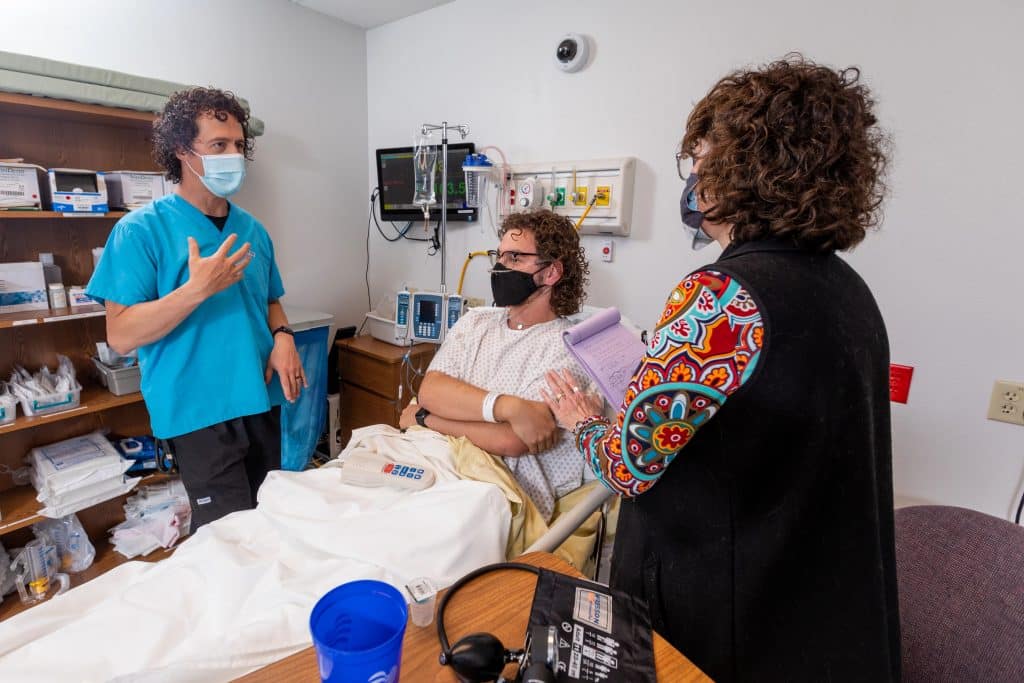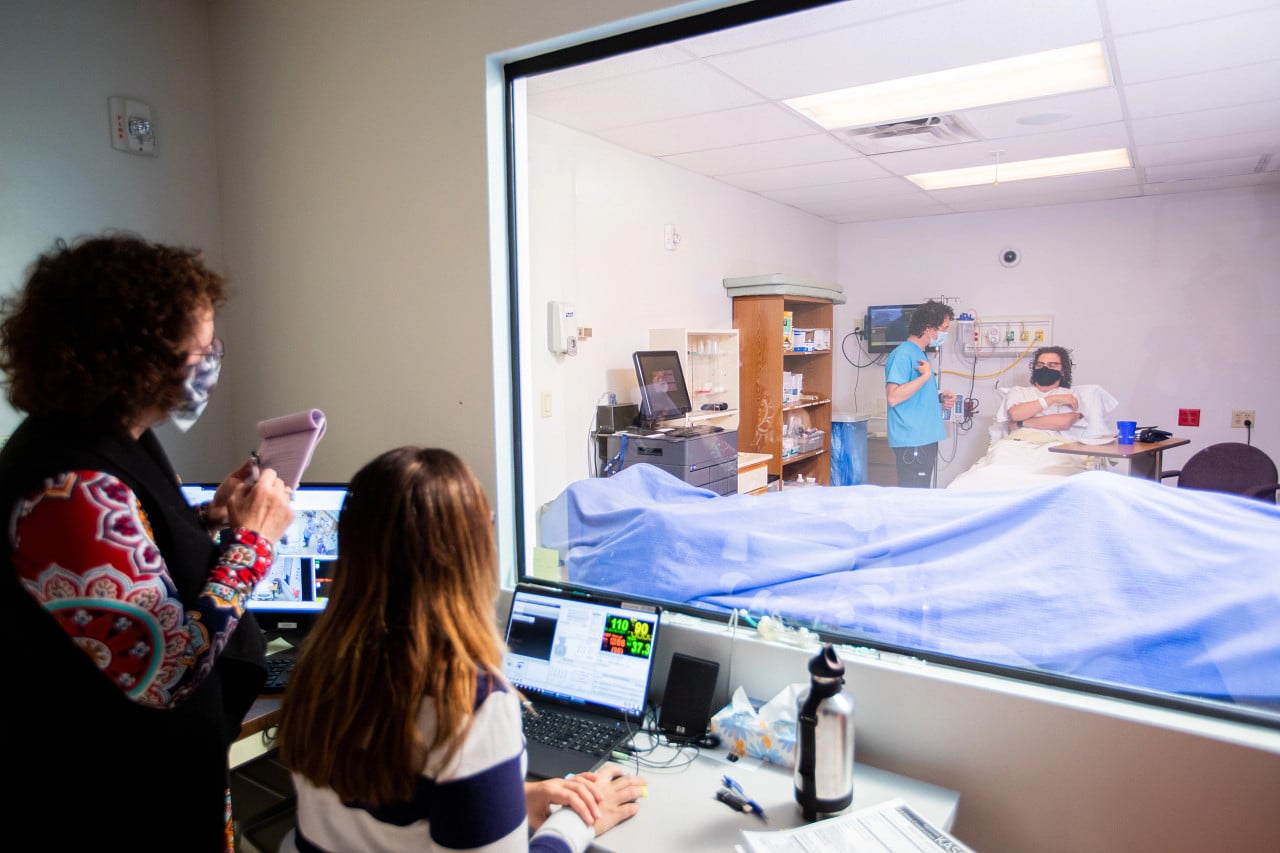What happens when you combine theatre and health care students? You get a realistic health care scene that gives both sets of students a chance to practice their skills, whether for the hospital or the stage.
Students from NAU’s School of Nursing and the Department of Theatre collaborated to create a simulation lab as part of the Health Care Theater Class—an exercise developed with the intention to give students hands-on experience in their respective fields of study. Before the simulation, the theatre students receive backgrounds for their characters and then play those characters during a hospital-room simulation designed by Bobby Eccleston, assistant clinical professor of nursing, and Kathleen McGeever, theatre chair.
The simulation focuses on key learning objectives for nursing students related to providing safe and effective patient-centered care. It allows students to hone their nursing skills on real humans who emote, speak and feel, unlike the mannequins they use in other simulations. Additionally, it provides the opportunity for theatre students to use applied theatre techniques and explore a potential career path, as simulated patients are a need for training medical professionals nationwide. Funding for this innovative class came from the Health First Foundation.
How it works
After the nursing students arrive at the scheduled simulation time, they enter the debrief room, where the theatre students are blocked from their view to avoid ruining the immersive experience. In the debrief room, the nursing students receive a rundown from their professors regarding how the simulation will go. This rundown covers the general subject of the simulation, information regarding medications that will be used, an overview of the patients’ histories and plans for treatments. Then, the nursing students prepare to enter the simulation room where the actors are in place after getting into character in their assigned roles, complete with gowns, make-up, bandages and anything else that may help round-out the immersive experience.
From there, the simulation plays out until all tasks are completed. Afterward, the students and professors regroup to discuss the objectives of the exercise and whether or not they were all met. The simulations conclude with a feedback session between the nursing and theatre students. The actors provide feedback to the nursing students regarding whether they, as patients, felt understood, taken care of and confident in the care they received. Then, the nursing students provide feedback to the theatre students regarding their performance and the credibility of the characters they embody.
The student experience
The collaboration between these two departments created a learning environment like no other. Previously, these simulations were run using mannequin patients. While the mannequins are adequate for students to practice administering treatments and medications, students have noted that they lack in creating that personal connection that is developed when working with a real person acting as the patient.
“I felt having live people (as opposed to mannequins) really helped bring reality to the situation,” said Taylor Porter, third-semester student at NAU’s School of Nursing. “This also provided an opportunity for psycho-social care, which in my opinion, is one of the most important skills a nurse can have. To provide not only physical needs but emotional needs for a person.”
Other nursing students who participated in the exercise noted that the simulation’s sense of urgency and authenticity was improved by working with the theatre department.
Sophia Boeshans is a junior in the nursing program and has participated in the health care theatre class twice. Boeshans mentioned that having the actors in place during the simulation made her feel as though she had a real patient for whom she was caring. She added that although all their simulations are treated as though they are real, simulating real life is much more difficult than with a mannequin.
“The actors have helped me be able to apply more of the emotional and body language aspect of nursing,” Boeshans said. “The actors have done such a great job at creating their characters—making whole lives for their characters which helped us simulate getting to know a real patient and being able to communicate with them.”
Holly Pumphrey, a fellow junior in the nursing program, recalled a specific interaction from the simulation that was particularly impactful to her. One of her patients in the exercise was undergoing chemotherapy and living with a weakened immune system due to the treatment. In light of these complications, the patient couldn’t have fresh flowers or outside food present in her room to prevent infections.
“Throughout this whole interaction, I could tell that the patient was disheartened by the fact that her partner couldn’t bring anything from home,” Pumphrey said. “This opened up an opportunity for education and discussion on how this made her feel. I learned a lot from this experience because it was a real person in front of me that was feeling and struggling through this process.”
Takeaways
Students and facilitators agree: the health care theatre class is a great educational experience. The nursing students noted that the opportunity to work with the theatre students elevated the lesson and objectives of the simulation exercise.
“Having interacted with both an actor and a mannequin, I feel that working with actors is much, much better for our education,” Boeshans said. “We are able to feel real emotions and simulate real life, as well as receive first-hand feedback on our care which we don’t get to have in clinical experience. I applaud health care theatre actors in their skills, as well as thank them for helping me to become a better nurse.”




